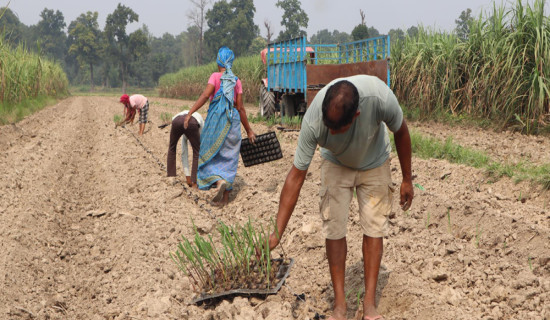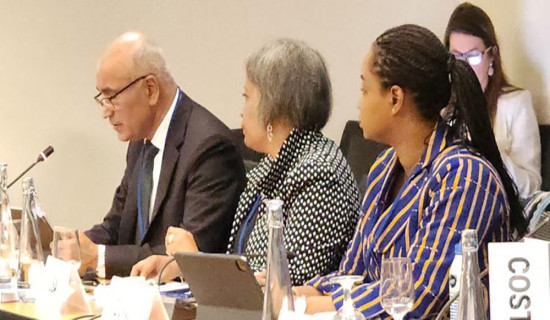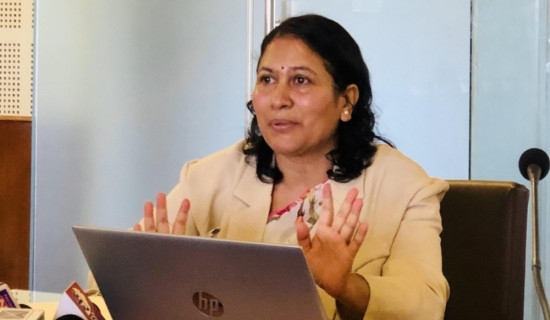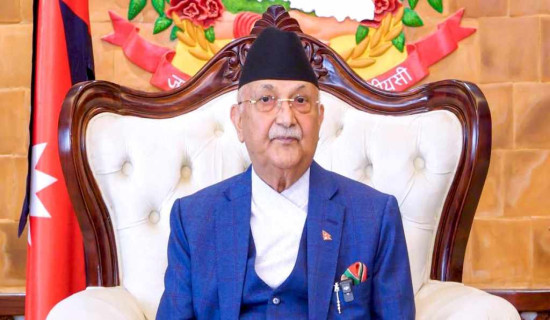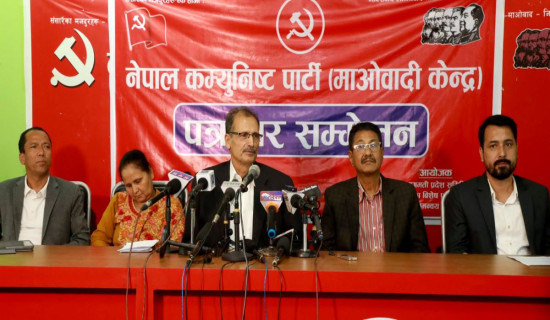- Friday, 25 October 2024
Support For Development
Nepal, set to graduate from the Least Developed Countries (LDCs) status to developing country in 2026, is still grappling with instability, poverty, insufficient infrastructure, trade deficit, unemployment and limited access to capital and modern technology. Despite having demographic dividend, it is ironically facing brain drain and shortage of competent human resources. Its entrenched backwardness precluded it from passing through the phase of agriculture and industrial revolutions. For decades, the country adopted mixed economy that incorporated the attributes of both capitalist and socialist systems. In the early 1990s, it began to espouse neo-liberal economy, giving much emphasis on the private sector-led economic initiatives.
Over the years, the country has succeeded in reducing extreme poverty but inequality, unemployment, foreign debt and inflation continue to roil it. In a globalised and interdependent world, international cooperation has become crucial to ameliorate the economic situation of the nations, particularly of those vulnerable to internal and external shocks. Nepal has been receiving foreign loans, aid and grants to meet the deficit of domestic resources since early 1950s when it devised the first development plan. Located between the two economic giants – India and China, it has emerged as the regional hub for conducting the activities of international institutions and agencies. The other day, Nepal drew a spotlight as it hosted the 21st replenishment meeting of the International Development Association (IDA) under the World Bank (WB) Group in Kathmandu.
A part of WB, the IDA offers grants and zero- to low-interest loans to the low-and middle-income countries to fight poverty and achieve sustainable development goals. At the IDA gathering, Nepal sought the support of global lending body to overcome its economic woes and climate crisis. The WB currently supports 25 active investment projects in Nepal with $2.4 billion in commitments from IDA. The IDA 21 meeting has the theme of ending poverty on a liveable planet: delivering impact with urgency and ambition. It will discuss five areas -- people, planet, prosperity, infrastructure and digitalisation – by applying the lenses of gender, jobs, fragility, conflict and violence, and private investments.
Addressing the meeting, Prime Minister Pushpa Kamal Dahal Prachanda urged the IDA to provide Nepal with concessional assistance to create additional employment opportunities, accelerate economic activities and graduate from least developed status. By fostering collaboration and providing equitable access to resources, technology, and investment, we can address historical disparities and promote inclusive growth, the Prime Minister said. Although Nepal is gearing up for inclusive economic development, it faces revenue scarcity, trade deficits and increasing debt obligations. As a result, it has fallen short of substantial financial resources for sustainable development goals (SDGs), Nationally Determined Contributions (NDCs) and infrastructure development.
Nepal's snow-capped Himalayas are melting fast due to the climate change. It is a known fact that the country negligibly emits greenhouse gases that cause the global warming but it has been disproportionately impacted. Climate change also risks reversing the development achievements. This is where it demands climate justice to compensate for the loss and damage. The country has embraced Green Resilient Inclusive Development (GRID) approach for the resilient growth. But it is in dire need of the financial assistance to acquire green growth and fight climate change. The IDA meet must come up with consensus policy to the support the underdeveloped nations like Nepal to realise their mission of shared prosperity, stability and global peace.










